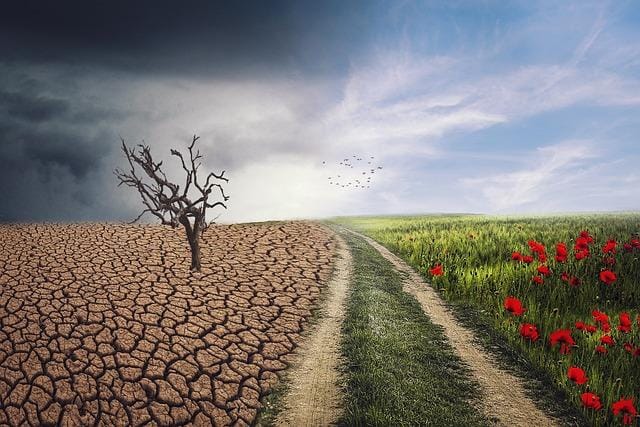As we navigate the ever-evolving landscape of our modern world, climate change has emerged as a formidable force that transcends borders and generations. But beyond the melting ice caps and intensified storms lies an oft-overlooked truth: the ripple effects of climate change are inextricably linked to our daily lives and the contents of our wallets. In this enlightening listicle, we unravel “4 Ways Climate Change Impacts Your Wallet and Lifestyle,” providing a snapshot of the subtle yet profound ways this global phenomenon reaches your doorstep. From shifting energy costs to the way your favorite produce is priced, you’ll discover how climate change weaves into your personal finances and daily routines. Ready to unlock new insights and equip yourself with knowledge that impacts both your pocket and your lifestyle? Let’s dive in!
1) 能源账单上涨
Climate change is increasingly having a direct impact on your energy bills, making it harder to keep your expenses in check. Warmer summers and more extreme weather conditions mean your air conditioning units are getting overworked, leading to skyrocketing electricity costs. Meanwhile, colder winters drive up the need for home heating, enhancing your gas or oil consumption. Not only does this hit your wallet directly, but it also creates a loop where increased energy use contributes back to climate change.
Moreover, as demand for energy spikes, utility companies may implement higher rates or introduce tiered pricing plans, further squeezing your budget. Beyond rates, some areas are experiencing more frequent power outages as grids struggle with demand. This can lead to costly solutions to mitigate the impact, such as purchasing backup generators or investing in alternative energy solutions.
2) 食品价格上涨
Modern agriculture finds itself grappling with increasingly unpredictable weather patterns exacerbated by global climate changes. These aberrations—think prolonged droughts, unexpected frosts, and unseasonal heavy rains—directly influence crop yield and livestock health. The result? A significant hike in food production costs that inevitably trickles down to the consumer. When the delicate balance of the food chain is disrupted, supermarket prices for staples such as bread, milk, and vegetables rise, making your daily meals more expensive.
It’s not just the raw food items that suffer. The increased cost of farming translates to higher prices for processed foods and restaurant meals as well. If you take a closer look at your receipt, you’ll notice a noticeable difference in prices over recent years. Here are some specific impacts:
- 水果和蔬菜 缺水和生长季节的变化导致产量降低。
- 肉类和乳制品 受极端气温和饲养条件改变影响,牲畜价格上涨。
- 海鲜 海洋温度的变化和酸化会影响鱼类种群和养殖条件。
| 食品项目 | 典型涨价 (%) |
|---|---|
| 面包 | 5-10 |
| 牛奶 | 7-12 |
| 蔬菜 | 8-15 |
| 肉类 | 10-20 |
3) 医疗成本增加
The impact of climate change on health is undeniable, influencing everything from respiratory problems due to increased air pollution to the spread of diseases previously confined to warmer climates. 美国的医疗成本与环境问题关系重大, particularly as the frequency and severity of extreme weather events rise. Imagine dealing with heatwaves that exacerbate chronic conditions like asthma or cardiovascular diseases, leading to more frequent doctor visits and even hospitalizations. The costs associated with these increased medical needs don’t just hit your bank account—they ripple out, affecting insurance premiums and the general economy.
Consider the changes in disease patterns. Warmer temperatures and increasing humidity provide ideal breeding grounds for mosquitoes, ticks, and other disease vectors. This shift has led to the spread of illnesses such as Lyme disease and West Nile virus into new territories. Preventive measures, treatments, and emergency responses drive up healthcare expenses not just on a personal level but as a collective burden. Here’s a breakdown of some potential additional costs you might face:
| 原因 | 潜在成本 |
|---|---|
| 过敏季节增多 | 经常看医生、吃药 |
| 与高温有关的疾病 | 急诊室就诊、降温费用 |
| 病媒传染的疾病 | 预防保健、治疗 |
4) 更昂贵的旅行
气候变化正在导致天气模式发生变化,这不仅会降低旅行的可预测性,还会增加旅行成本。 气温升高 and the increased occurrence of natural disasters like hurricanes and wildfires can lead to the closure of popular tourist destinations, increasing demand and prices in safer, less affected areas. With 机场延误和取消航班的情况更加频繁 due to extreme weather, airlines are forced to spend more on fuel and maintenance, often passing those costs onto passengers in the form of higher ticket prices.
此外 旅游淡季和旺季 越来越难以预测。虽然您可能曾经享受过安静的海滩度假,但气温的回升可能会让这些时间变得和传统的高峰期一样拥挤和昂贵。此外、 travel insurance costs 随着保险公司调整其风险评估模型,以考虑到更频繁和更严重的气候相关干扰,保险费可能会上升。以下是其中一些因素的简要分析:
| 系数 | 对差旅费用的影响 |
|---|---|
| 自然灾害 | 目的地关闭费用增加 |
| 航班延误/取消 | Higher ticket prices |
| 高峰季节的变化 | 住宿价格上涨 |
| 保险费用 | 更高的保费 |
总之
And there you have it, a comprehensive look at how climate change isn’t just an abstract concept but a tangible force that impacts our wallets and lifestyles. Whether it’s through the rising costs of goods, the strain on home energy bills, shifts in employment landscapes, or unexpected travel disruptions, the ripple effects are all too real. Awareness is the first step towards adaptation and resilience.
因此,下次当您在做开支预算或计划暑期度假时,请记住气候变化这只无声的手可能比您想象的更能影响您的决定。一线希望是什么?我们今天所做的每一个微小改变,都是对更可持续、更安全的明天的投资。保持信息灵通,保持复原力,最重要的是保持积极主动。
Until next time, here’s to making choices that benefit both our pockets and our planet. 🌍💸
